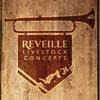A Focus on Immunity – The Impact of Nutrition
Published: August 27, 2020
Source : Dr. Steve Blezinger / Management and Nutritional Consultant, Reveille Livestock Concepts, Sulphur Springs, TX.
For the last few months, it seems that immunity has been at the forefront of our thought process – not just for the dairy industry but world-wide. While everyone has been focused on staying healthy and have become increasingly aware of the importance of a well-functioning immune system (IS), these are concepts that the dairy producer needs to keep in mind almost every day.
The IS in all animals is critical and complex. Life is dependent on a functional IS. Its primary function is to prevent the entry to and the effects of a wide variety of agents on the body – viruses, pathogenic bacteria, parasites. Most recently the world has focused on the ability, or lack thereof, the immune system to prevent viral infections in the person or animal. Secondly, there is the concern that the IS functions properly to prevent or at least reduce the effects of the viral infection. With the Covid-19 situation the medical industry has struggled to understand how and why the Covid-19 virus affected some people so profoundly while in other individuals who tested positive for the virus there were few, if any effects. One assumed answer was the functional immunity of the individual. It was learned early on that those with a depressed immune system (immunocompromised) were at much greater risk for the adverse effects of this virus.
While dairy cows don’t appear to be susceptible to this strain of coronavirus, they are absolutely dependent on having a highly functional IS.
A brief refresher: the IS in the cow has three primary components. These include:
1) Physical barriers. This includes skin, mucosal lining of the intestine, normal microorganisms, etc. It also includes “self-cleaning” procedures such as coughing, sneezing, vomiting and diarrhea. Organisms that penetrate the body are often eliminated by these procedures.
2) Innate immunity. The innate IS controls invading organisms with chemicals and/or by ingesting them. The innate IS lacks memory, so each infection is treated in the same manner. The IS needs adequate nutrition (including energy, protein and minerals) to function at a maximum level. Stress reduces the efficiency of this component.
3) Acquired IS. This component responds to vaccines. This system is developed from birth and “learns” to recognize and destroy specific invaders. With acquired immunity, the body remembers specific invaders and can respond more intensely if stimulated by those invaders later. While physical barriers and the native immune system respond rapidly, the acquired immune system takes days to weeks to become effective.
Immune function and nutrition are tied directly together. Repeated research over many years have shown a variety of connections to overall nutrition and specific nutrients and how these support the IS overall as well as specific components. Issues directly related to cow health and the IS show up as increased mastitis and metritis, respiratory, digestive, foot/hoof issues in all levels of the dairy – dry, transition (a problem), lactating cows, calves, developing heifers. Animals struggling with health issues will not perform as well or as efficiently, show increased vet and medication costs. The result is lower production and revenues and greater expense as well as cow losses and cull rates.
Because of the interrelationship between nutrition and immunity (health) it is critical for the dairy to demand that the nutritionist and veterinarian cultivate a productive relationship, so the two areas are blended as completely as possible.
Some basic guidelines to develop and maintain:
1) Basic, sound nutrition. While this sounds overtly obvious, maintaining a sound, consistent, properly balanced nutrition program (all nutrients), especially with farm economics as they have been, can be difficult. In many cases, the mineral and vitamin program is the first to be compromised when economics are difficult.
Maintaining a proper balance of nutrient delivery to the animal is not nearly as simple as it sounds, particularly when every penny counts. But as a reminder, dry matter intake, protein and energy balance, proper fiber levels, mineral and vitamin levels, overall ration digestibility are all important for production and reproduction as well as animal health.
2) Feed diets appropriate for transitions, stage of production, genetics, age/parity, environment, stress levels. All these factors and more affect nutrient requirements for the animal and should be taken into consideration. The more accurately (precision feeding) cows are fed the better the IS will be supported.
3) Mix and deliver feed as accurately as possible. This goes along with 1 and 2 above.
4) Adjust rations as needed when dictated by ingredients (particularly forages) change. This is always important but even more so for proper IS support. This promotes the consistency of nutrient delivery to the animal.
5) Maintain a plentiful supply of clean, fresh water. This cannot be overstated.
6) Take steps to reduce stress. This includes:
a. Ensure adequate bedding and resting accommodations – do not overcrowd.
b. Insure adequate bunk space.
c. Take steps to reduce heat/cold stress.
d. Monitor foot and leg health. Trim hooves as needed, use effective foot baths, etc.
7) Use a sound internal and external parasite reduction plan. Flies are a significant source of stress as are internal parasites. Plus, internal parasites consume critical nutrients needed for production AND immunity.
8) Overall good farm hygiene. This includes all areas of the farm: pens, parlor, feed storage and mixing, etc.
9) Keep a mycotoxin mitigation plan in place. Mycotoxins are immunodepressants and are found virtually everywhere. Feed a good, broad spectrum toxin binder consistently.
10) Consider feeding additives that have been proven by sound research to enhance health performance in the cow and or calf.
Quite a few additives and products have been identified as having some effect on the health and performance of the animal. These include yeast and yeast cell wall products, various direct fed microbials, essential oil (plant extracts), mycotoxin binders, enzyme sources, etc. In many cases the initial effect of feeding additives of this nature is to aid in stress reduction. There are an unlimited number of combinations of products/additives that may work synergistically in the animal to improve health and performance. Many products have been shown to be effective in enhancing IS function although because of FDA regulation, published claims cannot be made.
Conclusions
Immunity is a core component of the cow’s physiology and ability to produce efficiently and economically. A failure to maintain a sound nutrition program hurts immunity in both the long and short term. The benefits of implementing the most optimal nutrition program with an acute focus on supporting immunity cannot be overemphasized.
This article was originally published on www.progressivedairy.com and is reproduced with permission from the author.
Related topics:
Mentioned in this news release:

Recommend
Comment
Share
3 de septiembre de 2020
Congratulations on an excellent producer oriented paper on stimulating and strengthening the animal's immune system! We often forget the basic concepts when we are trying to put nutrition and management systems in place for a livestock operator. Quite often remembering the "old school" information and covering the basics first is the best way for us to make solid progress in animal production.
Recommend
Reply
29 de octubre de 2020
Understand and begging to have more knowledge about animals lifestyle before emerging as new farmer
Recommend
Reply
Recommend
Reply
Recommend
Reply

Would you like to discuss another topic? Create a new post to engage with experts in the community.












